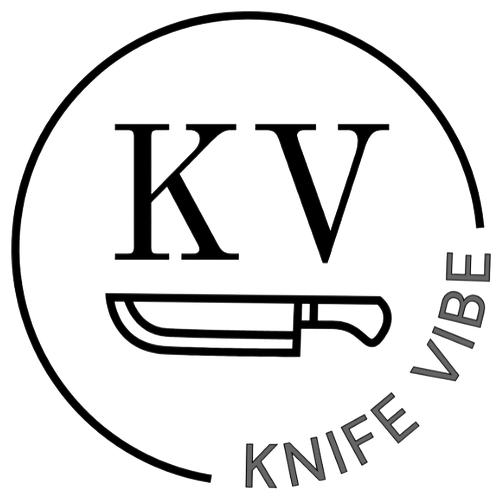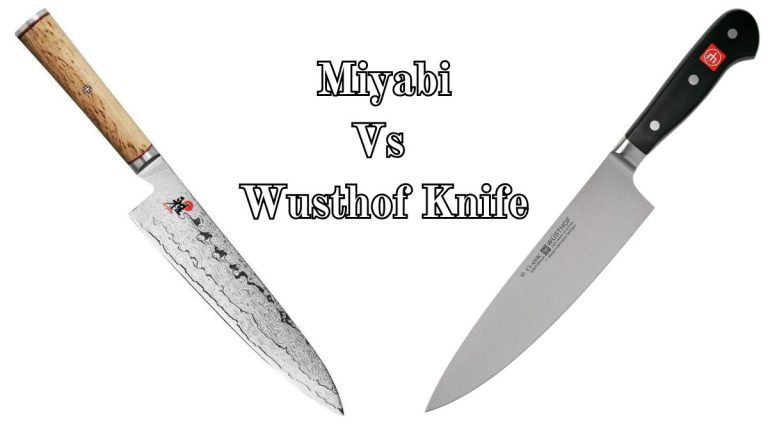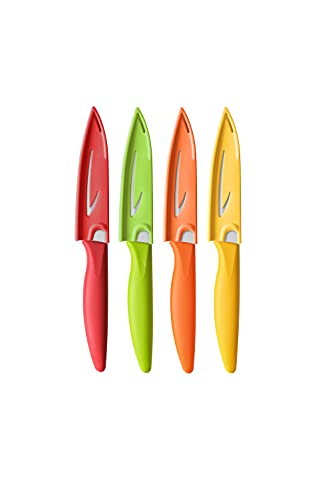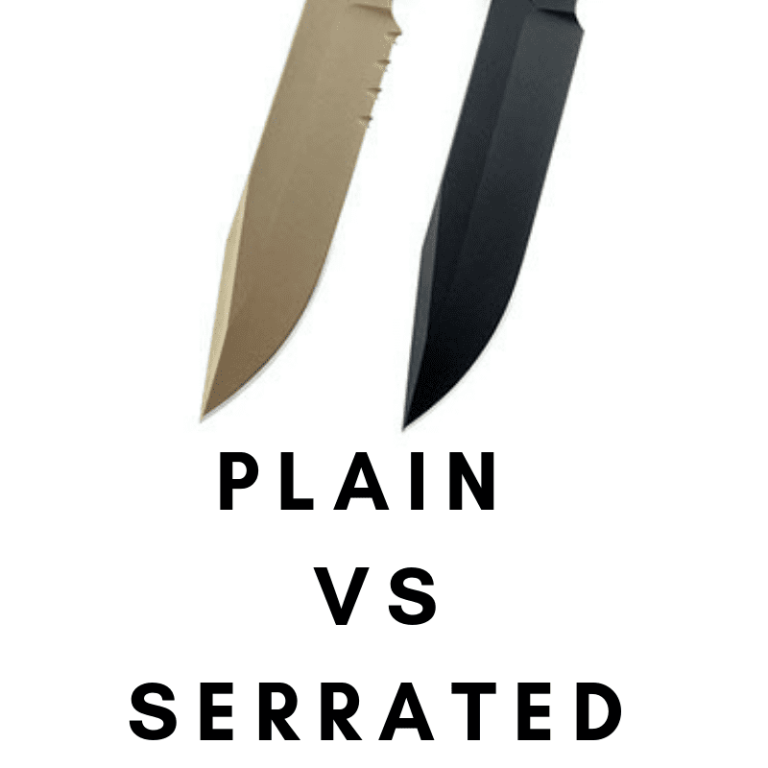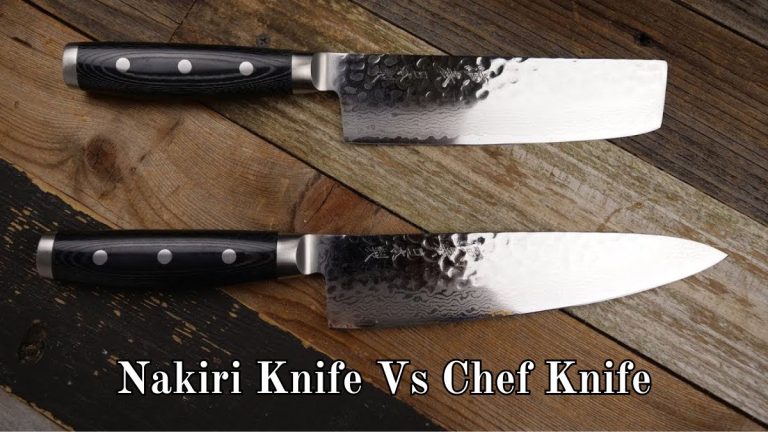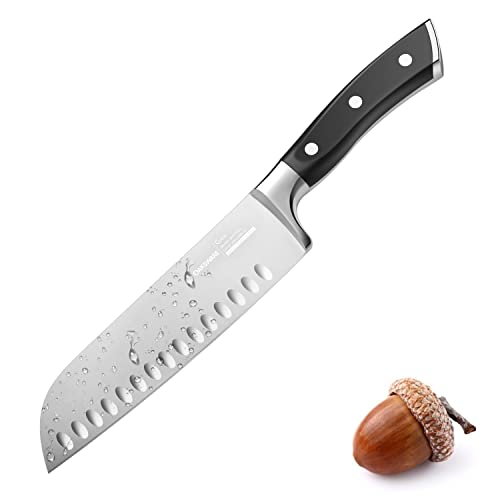Messermeister Vs Wusthof: Battle of the Best Kitchen Knives
Choosing the right kitchen knife is crucial for any home chef. Two popular brands, Messermeister and Wusthof, often come up in these discussions.
Comparing Messermeister and Wusthof can help you find the best knife for your needs. Both brands have a strong reputation for quality and performance. But how do they differ? What makes one a better choice over the other? This comparison will break down the features, benefits, and drawbacks of each brand.
By the end, you’ll have a clearer understanding of which knife suits your cooking style. Stay tuned as we dive into the details and help you make an informed decision.
Introduction To The Brands
Choosing the right knife brand can be overwhelming. Two popular brands are Messermeister and Wusthof. They both have rich histories and strong reputations. Let’s dive into their backgrounds.
Messermeister Background
Messermeister started in Germany in 1981. The brand was founded by Bernd Dressler. He had a passion for crafting high-quality knives. Messermeister stands out for its innovation and craftsmanship. They are known for their ergonomic designs and sharp blades.
Here are some key points about Messermeister:
- Founded: 1981
- Country of Origin: Germany
- Key Feature: Ergonomic designs
- Specialty: Handcrafted knives
Messermeister also emphasizes sustainability. They use eco-friendly materials. Their knives are designed to last a long time.
Wusthof History
Wusthof is a German brand with a long history. It was founded in 1814 by Johann Abraham Wusthof. The company is still family-owned. Over seven generations have maintained its legacy.
Here are some key points about Wusthof:
- Founded: 1814
- Country of Origin: Germany
- Key Feature: Precision forged blades
- Specialty: Professional-grade knives
Wusthof knives are known for their durability. They use high-carbon stainless steel. This makes the blades sharp and strong.
| Brand | Founded | Country of Origin | Key Feature | Specialty |
|---|---|---|---|---|
| Messermeister | 1981 | Germany | Ergonomic designs | Handcrafted knives |
| Wusthof | 1814 | Germany | Precision forged blades | Professional-grade knives |
Both Messermeister and Wusthof offer high-quality knives. Each brand has its unique strengths. Understanding their backgrounds helps in making an informed choice.
Knife Construction
Knife construction is an essential factor to consider for professional chefs and home cooks. The quality of the blade and handle can significantly impact performance, durability, and comfort. In this section, we will compare Messermeister and Wusthof knives based on Blade Material and Handle Design.
Blade Material
The blade material determines the knife’s sharpness, edge retention, and rust resistance. Messermeister knives typically use German stainless steel, known for its durability and resistance to staining. This steel maintains a sharp edge and is relatively easy to sharpen.
Wusthof knives also use high-carbon stainless steel, specifically X50CrMoV15. This steel is highly regarded for its balance between hardness and toughness. The high carbon content ensures long-lasting sharpness, while the stainless component prevents corrosion.
Both Messermeister and Wusthof blades are forged, not stamped. Forged blades are heavier and more durable, providing better control and balance.
Handle Design
The handle design influences the comfort and grip of the knife. Messermeister handles are often made from POM (Polyoxymethylene), a durable thermoplastic known for its rigidity and stability. The ergonomic design ensures a comfortable grip, reducing hand fatigue during prolonged use.
Wusthof, on the other hand, uses triple-riveted synthetic handles. These handles are also made from POM, ensuring durability and a secure grip. The classic design of Wusthof handles has been a favorite among chefs for its balance and comfort.
Both brands offer full-tang construction, where the blade extends through the handle. This design provides better balance and strength, reducing the risk of breakage.
| Feature | Messermeister | Wusthof |
|---|---|---|
| Blade Material | German stainless steel | High-carbon stainless steel (X50CrMoV15) |
| Handle Material | POM (Polyoxymethylene) | Triple-riveted synthetic (POM) |
| Construction | Forged | Forged |
| Handle Design | Ergonomic | Classic |
Sharpness And Edge Retention
Sharpness and edge retention are crucial factors when choosing a kitchen knife. Both Messermeister and Wusthof knives are well-known for their performance. But how do they compare in terms of sharpness and edge retention? Let’s dive into the details.
Initial Sharpness
Messermeister knives are known for their razor-sharp edges right out of the box. Their blades are honed to a fine edge, making them ideal for precision cutting. This initial sharpness can make a significant difference in your kitchen tasks.
Wusthof knives also boast impressive sharpness when new. They use high-quality steel and precise manufacturing techniques. The result is a sharp edge that performs exceptionally well from the start. This initial sharpness helps in effortless slicing and dicing.
Long-term Sharpness
Long-term sharpness is where Messermeister knives truly shine. They maintain their edge for a considerable time. This means fewer sharpening sessions and more consistent performance.
Wusthof knives also offer good edge retention. Their blades are crafted to keep their sharpness through regular use. With proper care, these knives can stay sharp for an extended period.
Both brands excel in maintaining sharpness, but Messermeister has a slight edge. Their blades tend to hold their sharpness a bit longer.

Credit: prudentreviews.com
Variety Of Knives
Choosing between Messermeister and Wusthof knives can be challenging. Both brands offer a wide range of knives. From chef’s knives to specialty knives, each brand has its unique features. Let’s explore the variety of knives from each brand.
Chef’s Knives
Both Messermeister and Wusthof provide excellent chef’s knives. These knives are versatile and essential in any kitchen.
| Brand | Blade Material | Handle Material |
|---|---|---|
| Messermeister | High-carbon stainless steel | Wood or synthetic |
| Wusthof | High-carbon stainless steel | Polypropylene or wood |
Messermeister chef’s knives often feature a slightly curved blade. This makes chopping and slicing easier. Wusthof chef’s knives come with a precision edge. This provides a sharp and long-lasting cutting experience.
Specialty Knives
Specialty knives are designed for specific tasks. Both brands offer a variety of these knives.
- Boning Knives: Messermeister boning knives are flexible. They are great for removing bones. Wusthof boning knives are more rigid. They provide better control.
- Paring Knives: Messermeister paring knives are small and easy to handle. Perfect for intricate tasks. Wusthof paring knives have a slightly longer blade. This makes them versatile for multiple uses.
- Bread Knives: Messermeister bread knives have a scalloped edge. This helps in cutting through crusty bread easily. Wusthof bread knives feature a serrated edge. They provide a clean cut with minimal crumbs.
Each brand has unique features in their specialty knives. Your choice will depend on your specific needs.
Comfort And Ergonomics
Comfort and ergonomics are crucial factors when choosing a kitchen knife. A comfortable knife reduces fatigue and enhances precision. Messermeister and Wusthof are known for their well-designed knives. Let’s explore how they compare in terms of comfort and ergonomics.
Grip Comfort
Grip comfort is vital for extended use. Messermeister knives often feature a rounded handle. This design fits naturally in the hand. The soft-touch grip adds to the comfort. Wusthof knives, on the other hand, have a slightly contoured handle. This shape provides a secure hold. The grip material is sturdy, reducing slip risk. Both brands offer excellent grip comfort.
Balance And Weight
Balance and weight affect how a knife feels. Messermeister knives are well-balanced. This makes them easy to control. They are also lightweight, reducing hand strain. Wusthof knives are slightly heavier. This weight provides a solid feel. The balance is near perfect, offering great control. Both knives excel in their own way.
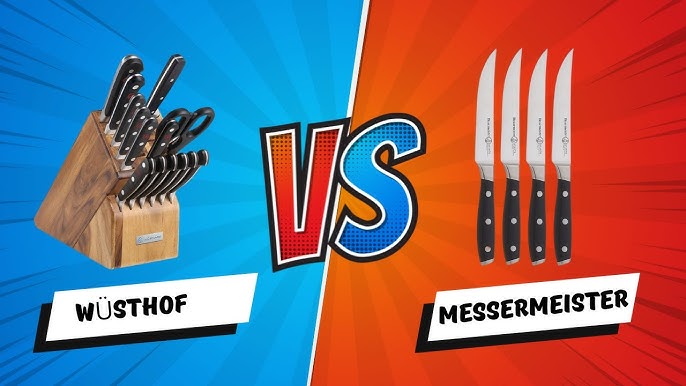
Credit: www.youtube.com
Price Comparison
When comparing Messermeister and Wusthof, price is a key factor. Both brands offer various options. This section dives into their price ranges.
Entry-level Options
Messermeister’s entry-level knives are budget-friendly. They offer quality without breaking the bank. You can find good Messermeister knives for under $50.
Wusthof’s entry-level knives are slightly more expensive. They start around $70. This higher price reflects their long-standing reputation.
High-end Models
For high-end models, both brands have premium options. Messermeister’s high-end knives can cost upwards of $200. These knives offer exceptional craftsmanship.
Wusthof’s high-end models are also pricey. Some Wusthof knives exceed $300. They are known for their durability and performance.
Customer Reviews
Customer reviews often give valuable insights into products. For Messermeister and Wusthof knives, reviews highlight both strengths and weaknesses. Here are some common themes from customer feedback.
Positive Feedback
Messermeister knives receive praise for their sharpness and durability. Many customers appreciate the ergonomic design, which makes them comfortable to use. Additionally, users report that the blades hold their edge well, reducing the need for frequent sharpening.
- Sharpness: Customers consistently mention how sharp the knives are out of the box.
- Durability: Reviews highlight the long-lasting nature of the blades.
- Ergonomics: The handles are designed to fit comfortably in the hand.
Wusthof knives are also highly rated for their precision and quality. Customers often comment on the balance and weight of the knives, making them easy to handle. Many users find that the knives remain sharp for extended periods, even with frequent use.
- Precision: Users appreciate the accuracy in slicing and dicing.
- Quality: The materials and craftsmanship receive high marks.
- Balance: The weight distribution makes the knives feel balanced.
Common Complaints
Despite the positive feedback, some customers have noted issues. For Messermeister knives, common complaints include the handles becoming slippery when wet. A few users also mention that the knives are heavier than expected.
- Slippery Handles: Wet handles can be hard to grip.
- Weight: Some find the knives heavier than they like.
Wusthof knives also have their share of criticisms. Some users report that the knives are difficult to sharpen. A few customers have experienced chipping on the blade edges.
- Sharpening Difficulty: Some find the blades hard to sharpen.
- Chipping: Occasional reports of blade edges chipping.
Overall, both Messermeister and Wusthof knives receive strong reviews. Yet, they are not without their flaws.
Final Thoughts
Final thoughts on the Messermeister vs Wusthof debate can help you decide which brand suits your needs. Both brands offer high-quality knives, but their differences can impact your choice. Evaluating their benefits for home cooks and professional chefs can provide clarity.
Best For Home Cooks
Messermeister knives are excellent for home cooks. Their ergonomic handles make them easy to use. The blades are sharp and retain their edge for a long time. This means less frequent sharpening. Messermeister knives also offer a good balance, making them comfortable to use for extended periods. They come with a variety of styles and prices to fit different budgets. For home kitchens, this flexibility is a plus.
Best For Professional Chefs
Wusthof knives are ideal for professional chefs. These knives are known for their durability and precision. The blades are forged from high-carbon stainless steel, ensuring they stay sharp. Wusthof knives have a full tang, providing better balance and control. This is crucial in a professional kitchen where precision matters. The handles are designed to reduce fatigue during long hours of use. For chefs, Wusthof offers reliability and performance.
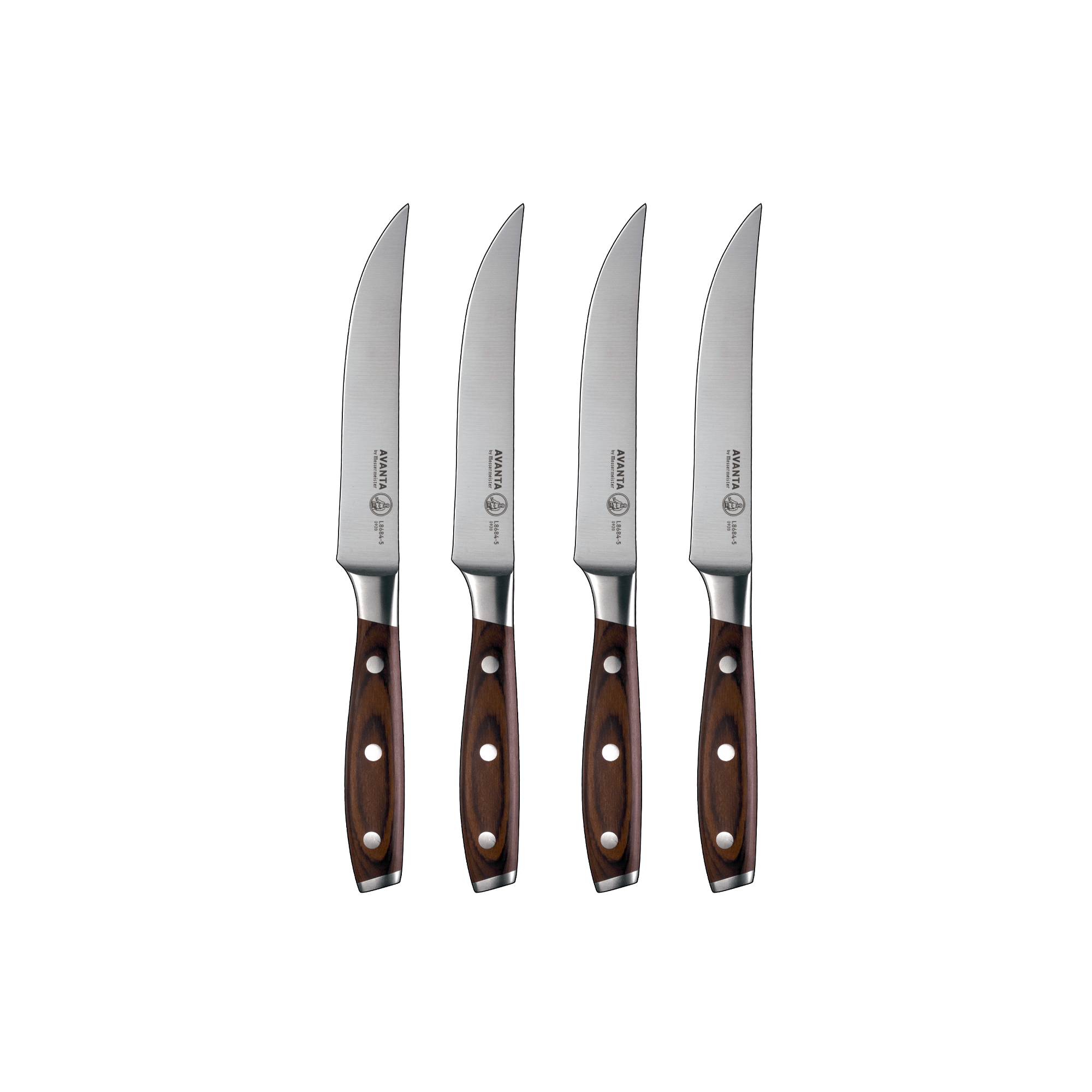
Credit: www.messermeister.com
Frequently Asked Questions
What Are The Key Differences Between Messermeister And Wusthof?
Messermeister focuses on innovative designs and ergonomic handles. Wusthof is known for precision and durability. Both brands offer high-quality knives with distinct features.
Which Brand Offers Better Blade Quality?
Both Messermeister and Wusthof provide excellent blade quality. Messermeister uses German stainless steel. Wusthof uses high-carbon stainless steel. Both are renowned for sharpness and edge retention.
Are Messermeister Knives More Affordable Than Wusthof?
Messermeister knives are generally more affordable than Wusthof. However, both brands offer various price ranges. It depends on the specific knife series and features.
Which Brand Has Better Handle Design?
Messermeister is known for its comfortable, ergonomic handle designs. Wusthof also offers well-balanced handles. Both brands focus on user comfort and control.
Conclusion
Choosing between Messermeister and Wusthof can be tough. Both brands offer quality knives. Messermeister excels in design, while Wusthof shines in durability. Your choice depends on your cooking needs. Consider your budget and preferences. You can’t go wrong with either option.
Happy cooking!
